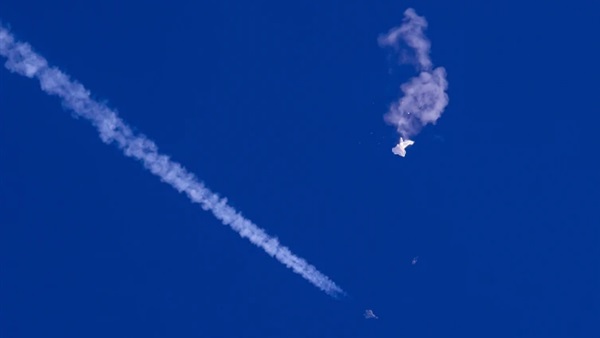Why use spy balloons in a world inundated with satellites?
Monday 20/February/2023 - 05:59 PM

Ahmed Seif Eldin
Reports of surveillance and reconnaissance balloons spotted in different parts of the world have raised questions about the use of this long-standing technology for espionage and warfare. In early February, the United States spent a week following and finally shooting down a Chinese surveillance balloon, which was suspected to be collecting electronic communication information. Following this, sightings and shootings of similar objects have been reported. Over the weekend, US and Canadian authorities took down three more objects over their respective airspaces. While some of these objects may be harmless hobbyist balloons, experts suggest that balloons have reasons for continued use in espionage and warfare. They are easy to make, fill with lifting gas and launch, making them a low-entry point technology for spying.
The use of balloons in warfare and espionage dates back to the French Revolution, with the earliest recorded use in 1794 by the French Aerostatic Corps. The US military first used them during the Civil War, and during World War I, phone lines were attached to the balloons to relay information in real-time. Balloons also played a role in World War II. While the advent of more advanced technology, such as the development of satellites and stealth aircraft, has reduced their use in espionage, balloons continue to be used by countries around the world.
William Kim, a consultant at the Marathon Initiative think tank, who researches spy balloons, suggested that the US tends to use satellites more, while the Chinese seem to use balloons a lot. He explained that balloons’ lower cost compared to launching a rocket to place a satellite in orbit and relative proximity to potential targets mean that balloons can more effectively capture data about a more targeted area. Balloons are also able to evade radar, making them more challenging to track than satellites. The recent diplomatic fiasco notwithstanding, Kim said there are several advantages to spy balloons that heighten their appeal over more high-tech surveillance methods.
While balloons may appear to be a rudimentary tool of espionage and warfare in an era of automated drones and laser-guided missiles, they continue to have a place in military and geopolitical landscapes. However, the recent string of downed balloons has caused concern, with experts noting that the objects could present a threat to the safety and security of the American people. US President Joe Biden said that he would take down any object presenting such a threat. Though balloons are easy to launch, they can cause diplomatic incidents, as seen in the Project Moby Dick and Project Genetrix programs during the Cold War, in which only a few of the over 500 balloons deployed were recovered.
Overall, the use of balloons for espionage and warfare has a long and lofty history. While advances in technology have reduced their use, balloons continue to provide benefits that make them attractive for intelligence gathering. The recent downing of surveillance balloons in different parts of the world shows that they remain a viable option for some countries, despite the diplomatic risks and limitations of their technology.





